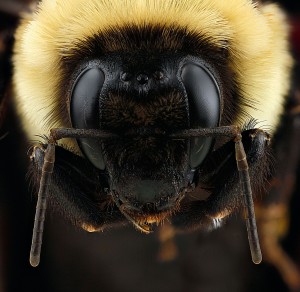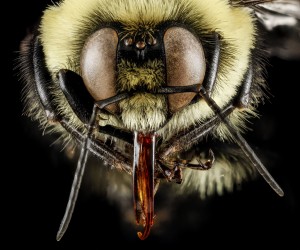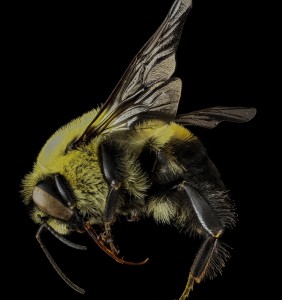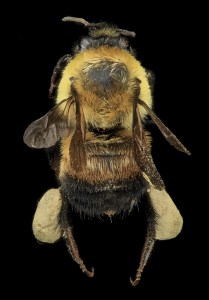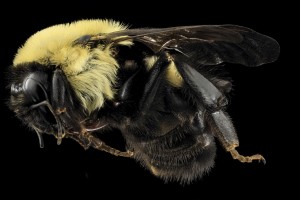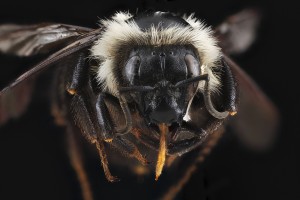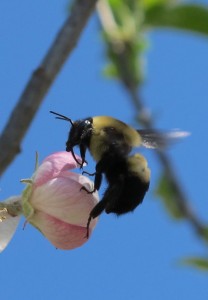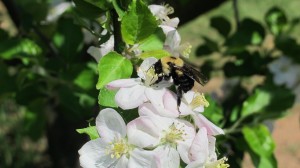Bumblebees (Genus Bombus)
Size: Very Large (Worker (female) 10-20 mm; Drone (male) 13-23 mm; Queen = 17-25 mm)
(Workers get smaller and smaller as the season progresses)
{Size Comparison-the average honeybee is 13mm}
Color: Black body covered with dense yellow and black hair; (reddish hair in a few species)
Type of Flight: Slow and lumbering (without fear of humans)
Distinguishing Characteristics:
(1) Fat bee with a small head (large thorax and abdomen)
(2) Hairs cover the entire body (head, thorax, and abdomen); Hair color patterns help to determine bumblebee species
(3) Workers have morphological specializations, including the pollen basket (corbiculum) on the rear legs
Abundance in Georgia: Common
Typically Found in Georgia: March-October (Bumblebees are some of the first bees to emerge in Spring)
Pollination Value: Very High (an important pollinator of agricultural crops)
Plants Associated with: All flowering plants (Generalist – not specific to any type of plant)
Nesting Habitat: Bumble bees nest in the ground in abandoned mammal holes. Bumble bees live in large colonies with one queen, a few drones (males), and many workers (females).
Classification: Family: Apidae Genus: Bombus
Number of Species in Georgia: 17
Number of Species in the United States: 49
Photos taken by Sam Droege and staff at the USGS Bee Inventory and Monitoring Laboratory (Used with permission)
–> Click on the photo to enlarge the image
Field photos taken by Mark Schlueter
